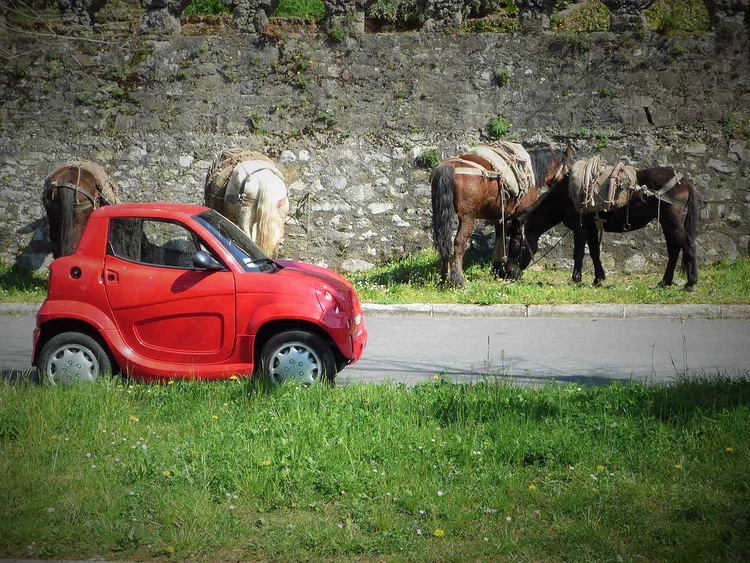1. A Guide for Driving Manual Transmission Cars in Europe
2. Understanding Small High-Performance Engines
3. Tips for Efficient Driving in Europe
A Primer for Those Who Don’t Normally Drive a Manual Transmission Small Car
This is for all of you who haven’t driven a manual transmission European car before or are used to big engines with lots of low-end torque, as American cars were famous for in the recent past.
The kind of European cars most tourists encounter when they travel generally feature small, high-performance engines. High performance isn’t only about speed; it’s also about efficiency. These cars require a different driving approach to maximize both performance and fuel economy.
Keep the RPMs Up When You Need Power
To optimize a small, high-performance engine, engineers focus the engine’s power toward the upper end of the RPM range, where it operates more efficiently. Therefore, if you notice an incline ahead, delaying gear changes will allow you to tap into the increased horsepower and torque available at higher RPMs (engine rotations per minute). Maintaining RPMs between 3,000 and 4,000 should enable you to ascend nearly any hill effortlessly.
Does it “hurt” the engine to do this? Not at all. In fact, “lugging” the engine—attempting to push a heavy vehicle up a slope with insufficient horsepower and excessive fuel—creates real problems. Additionally, once you crest the hill, you can shift into 5th gear and continue cruising smoothly.
Accelerate Briskly Away from Stops
Despite widespread misconceptions, tests have demonstrated that brisk acceleration with frequent shifting results in the best fuel economy for nearly all vehicles—crucial when fuel prices soar near $9 a gallon.
So, what does brisk acceleration entail? Typically, peak efficiency occurs at approximately 75% of full throttle (the right pedal in Continental vehicles). Shift frequently while keeping your average RPM around 2,000 if you’re on a flat surface, accelerating until you reach the speed limit. Remember to maintain a safe distance from other vehicles to avoid the need for frequent braking—turning momentum into overheated brake disks by braking often is one of the most detrimental actions for fuel efficiency.
Speeding Along the Great Highways of Europe
European roads have become notorious for speed traps, particularly in countries like Italy. Although many roads once had unrestricted speed limits, this is now rare in most regions. Consequently, remain vigilant; penalties for speeding can be more expensive than filling up your tank, which can be quite a hit to your budget.
The autobahns in Germany and the autostrada in Italy offer the quickest routes between European cities, although they are often neither the most scenic nor the least expensive options.
Unlike the free-for-all driving style sometimes found in the US, most Europeans follow the convention of driving on the right and passing on the left. This means you should pull out to pass and then return to the right lane. Expect to have cars tailgating if you choose to enforce a personal speed limit in the left lane—if you prefer to avoid this, simply stay in the right lane. (Note that four European countries drive on the left: Cyprus, Ireland, Malta, and the United Kingdom.)
Alcohol Limits in Europe
The EU recommends a blood alcohol limit of 0.5 grams per liter (0.05%). However, numerous countries have implemented stricter limits. The trend is toward lowering these thresholds, so it is advisable to verify the regulations of the country you are visiting. Many wonderful restaurants in the European countryside also provide accommodations, allowing you to enjoy fine food and wine without the worry of driving afterward.





